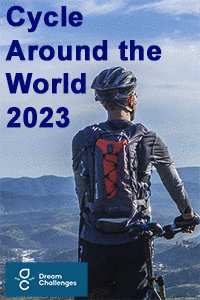Positive Health Online
Your Country

Research: MAY and COLLEAGUES,
Listed in Issue 301
Abstract
MAY and COLLEAGUES, 1 From the Prevention Science Institute and Department of Psychology (May), University of Oregon; Pain Consultants of Oregon (Kosek), Eugene, Oregon; Department of Neurobiology and Anatomy (Zeidan), Wake Forest School of Medicine, Winston-Salem, North Carolina; and Department of Psychology and Center for Translational Neuroscience (Berkman), University of Oregon, Eugene, Oregon tested endogenous opioid involvement in meditation analgesia associated with long-term meditation practice.
Background
Studies have consistently shown that long-term meditation practice is associated with reduced pain, but the neural mechanisms by which long-term meditation practice reduces pain remain unclear. This study tested endogenous opioid involvement in meditation analgesia associated with long-term meditation practice.
Methodology
Electrical pain was induced with randomized, double-blind, cross-over administration of the opioid antagonist naloxone (0.15-mg/kg bolus dose, then 0.2-mg/kg per hour infusion dose) with 32 healthy, experienced meditation practitioners and a standardized open monitoring meditation.
Results
Under saline, pain ratings were significantly lower during meditation (pain intensity: 6.41 ± 1.32; pain unpleasantness: 3.98 ± 2.17) than at baseline (pain intensity: 6.86 ±1.04, t(31) = 2.476, p = .019, Cohen's d = 0.46; pain unpleasantness: 4.96 ±1.75, t(31) = 3.746, p = .001, Cohen's d = 0.68), confirming the presence of meditation analgesia. Comparing saline and naloxone revealed significantly lower pain intensity (t(31) = 3.12, p = .004, d = 0.56), and pain unpleasantness (t(31) = 3.47, p = .002, d = 0.62), during meditation under naloxone (pain intensity: 5.53 ± 1.54; pain unpleasantness: 2.95 ± 1.88) than under saline (pain intensity: 6.41 ± 1.32; pain unpleasantness: 3.98 ± 2.17). Naloxone not only failed to eliminate meditation analgesia but also made meditation analgesia stronger.
Conclusion
Long-term meditation practice does not rely on endogenous opioids to reduce pain. Naloxone's blockade of opioid receptors enhanced meditation analgesia; pain ratings during meditation were significantly lower under naloxone than under saline. Possible biological mechanisms by which naloxone-induced opioid receptor blockade enhances meditation analgesia are discussed.
References
Lisa M May 1 , Peter Kosek, Fadel Zeidan, Elliot T Berkman. Enhancement of Meditation Analgesia by Opioid Antagonist in Experienced Meditators. Psychosom Med;80(9):807-813. doi: 10.1097/PSY.0000000000000580. Nov/Dec 2018.



